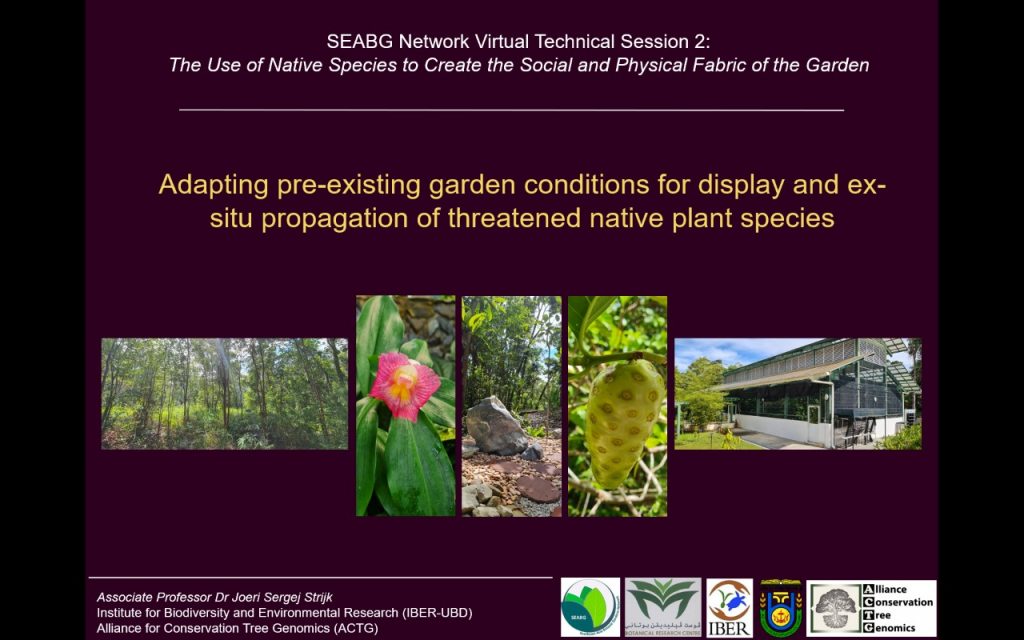
Many botanical gardens include portions of primary or secondary forest, or former plantation vegetation, in or along the margins of the cultivated garden areas. Some already use these as thematic or educational gardens (such as remnant jungle areas or forested garden margins) while others are using these to nurture temporary collections, and collect or grow new specimens. In the face of changing climate conditions and keeping in mind the complexity and potentially high costs of maintaining many species under artificial conditions in greenhouses and shade-houses, it is of interest to consider how gardens can make better use of these low- or non-managed vegetation areas which may pre-date the garden establishment.
In the second technical session organized by the Southeast Asian Botanic Gardens Network (SEABG), Assoc Prof Joeri Strijk of the Institute for Biodiversity and Environmental Research (IBER) and the Alliance for Conservation Tree Genomics (ACTG), presented a case study of the Botanical Research Center at UBD. During the session, Dr Strijk outlined the current setup of the BRC and presented several avenues along which the garden could be further developed to contain more of the iconic plant diversity of Brunei, despite it being situated in an environmentally restrictive dry Kerangas environment. In addition to the improved use of the existing natural space in the BRC to extend living and ex-situ collections, further development of the ex-situ and conservation research facilities, and the public educational role of the site, has the potential for the garden to take on a leading role in the plant conservation of endangered Bruneian and Bornean flora.
Text and image by: Associate Professor Joeri Strijk

